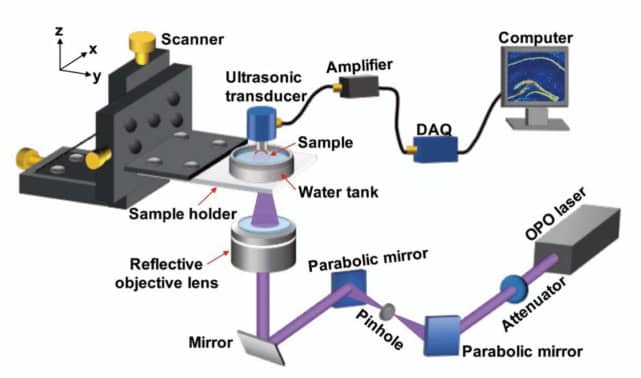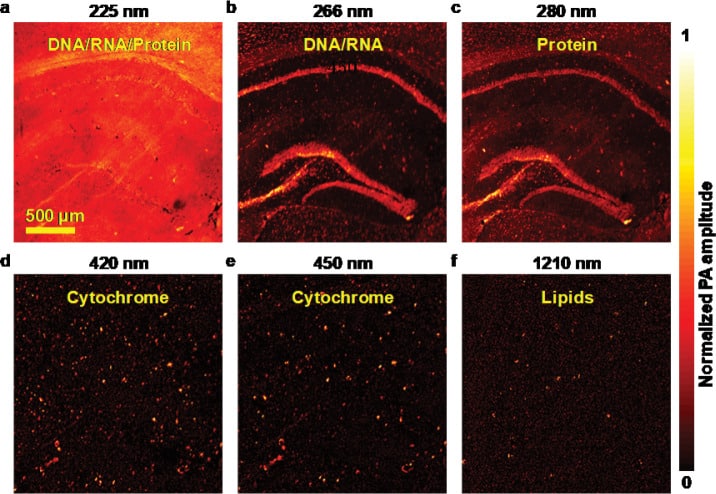Yajing Liu, Terence T W Wong, Junhui Shi, Yun He, Liming Nie, and Lihong V. Wang
Published: 28 February 2023

Abstract
Mapping diverse cellular components with high spatial resolution is important to interrogate biological systems and study disease pathogenesis. Conventional optical imaging techniques for mapping biomolecular profiles with differential staining and labeling methods are cumbersome. Different types of cellular components exhibit distinctive characteristic absorption spectra across a wide wavelength range. By virtue of this property, a lab-made wide-band optical-resolution photoacoustic microscopy (wbOR-PAM) system, which covers wavelengths from the ultraviolet and visible to the shortwave infrared regions, was designed and developed to capture multiple cellular components in 300-μm-thick brain slices at nine different wavelengths without repetitive staining and complicated processing. This wbOR-PAM system provides abundant spectral information. A reflective objective lens with an infinite conjugate design was applied to focus laser beams with different wavelengths, avoiding chromatic aberration. The molecular components of complex brain slices were probed without labeling. The findings of the present study demonstrated a distinctive absorption of phospholipids, a major component of the cell membrane, brain, and nervous system, at 1690 nm and revealed their precise distribution with microscopic resolution in a mouse brain, for the first time. This novel imaging modality provides a new opportunity to investigate important biomolecular components without either labeling or lengthy specimen processing, thus, laying the groundwork for revealing cellular mechanisms involved in disease pathogenesis.

Label-free multi-wavelength wbOR-PAM images of a formalin-fixed 5-μm-thick mouse brain slice at six different wavelengths. (a) DNA/RNA and protein show strong absorption at 225 nm. (b-f) The remaining five wavelengths illustrate the distribution of DNA/RNA, protein, cytochrome, and lipids at 266, 280, 420, 450, and 1210 nm wavelengths, respectively.
… For optical spectral analysis, a DWARF-Star spectrometer (StellarNet, Inc., USA) was used to calibrate the wavelength of the OPO laser. The parameter was quantified with the SpectraWiz® software …





